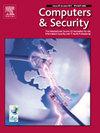Constructing arbitrary write via puppet objects and delivering gadgets in Linux kernel
IF 4.8
2区 计算机科学
Q1 COMPUTER SCIENCE, INFORMATION SYSTEMS
引用次数: 0
Abstract
Researchers have proposed various methods to perform kernel exploitation, which facilitates vulnerability evaluation and fixing. To sum up, traditional approaches tend to construct ROP chains or perform arbitrary write to escalate privileges. However, the former depends on some unusual ROP gadgets to save the stack frame pointer and demands adequate kernel memory space to hold the ROP chain. Additionally, to construct arbitrary write, existing approaches either rely on the usability of a certain kernel object or have restrictions on the write value. These limitations sometimes hinder the exploitation of the vulnerability.
In this paper, to overcome the limitations of existing exploitation strategies, we propose an elegant approach, which uses puppet objects and delivering gadgets to construct arbitrary writes. This approach relies on common ROP gadgets, requires less controllable memory, imposes fewer restrictions, and features a concise exploitation process. We also devise a tool named PODE to automatically identify puppet objects in Linux kernel and select suitable puppet objects and delivering gadgets for a given vulnerability. We evaluate PODE using 22 real-world kernel vulnerabilities and successfully exploit 16 of them using puppet objects, demonstrating that it not only diversifies the ways to perform kernel exploitation but also escalates the exploitability of kernel vulnerabilities.
通过木偶对象构造任意写入,并在Linux内核中交付小工具
研究人员提出了多种内核利用方法,方便了漏洞评估和修复。总而言之,传统方法倾向于构建ROP链或执行任意写入来提升特权。然而,前者依赖于一些不寻常的ROP小工具来保存堆栈帧指针,并且需要足够的内核内存空间来保存ROP链。此外,为了构造任意写入,现有的方法要么依赖于某个内核对象的可用性,要么对写入值有限制。这些限制有时会阻碍对漏洞的利用。在本文中,为了克服现有开发策略的局限性,我们提出了一种优雅的方法,该方法使用木偶对象和交付小工具来构造任意写入。这种方法依赖于常见的ROP小工具,需要较少的可控内存,施加较少的限制,并且具有简洁的开发过程。我们还设计了一个名为PODE的工具来自动识别Linux内核中的傀儡对象,并为给定的漏洞选择合适的傀儡对象和交付小工具。我们使用22个真实世界的内核漏洞对PODE进行了评估,并成功利用了其中的16个使用傀儡对象的漏洞,这表明它不仅使内核漏洞的利用方式多样化,而且还升级了内核漏洞的可利用性。
本文章由计算机程序翻译,如有差异,请以英文原文为准。
求助全文
约1分钟内获得全文
求助全文
来源期刊

Computers & Security
工程技术-计算机:信息系统
CiteScore
12.40
自引率
7.10%
发文量
365
审稿时长
10.7 months
期刊介绍:
Computers & Security is the most respected technical journal in the IT security field. With its high-profile editorial board and informative regular features and columns, the journal is essential reading for IT security professionals around the world.
Computers & Security provides you with a unique blend of leading edge research and sound practical management advice. It is aimed at the professional involved with computer security, audit, control and data integrity in all sectors - industry, commerce and academia. Recognized worldwide as THE primary source of reference for applied research and technical expertise it is your first step to fully secure systems.
 求助内容:
求助内容: 应助结果提醒方式:
应助结果提醒方式:


